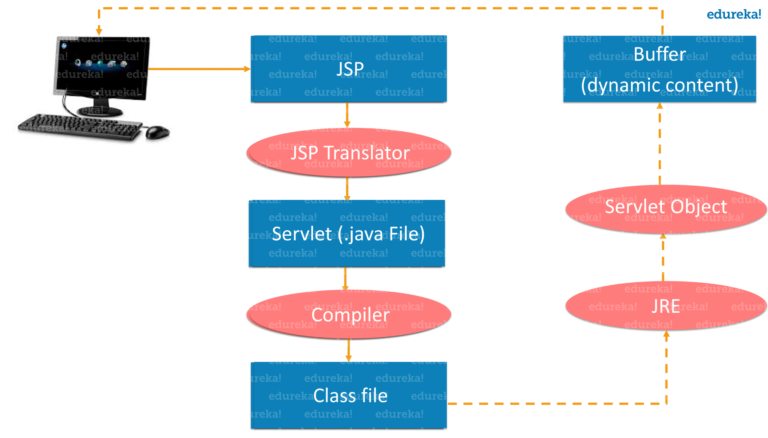What is jsp?
- JSP, which stands for JavaServer Pages, is a technology used for building dynamic web applications in Java. It allows developers to create web pages that can generate dynamic content and interact with databases, making it a fundamental component of web development in Java.
key aspects of JSP
- Dynamic Web Pages: JSP enables the creation of dynamic web pages by embedding Java code directly within HTML or XML markup.
- Servlet-Based: Under the hood, JSP pages are compiled into Java servlets by the web container (e.g., Apache Tomcat).
- HTML Integration: JSP pages can contain standard HTML code, making it easy to create user interfaces and web forms.
- Scriptlet Tags: JSP provides special tags, such as <% %>, for embedding Java code (scriptlets) directly into the page.
Advantages of JSP
- JSP offers an efficient and more straightforward approach to coding dynamic web pages.
- JSP provides a wide variety of pre-built tags and custom tags, which can be used to add functionality to web pages
- JSP allows developers to separate the presentation of the web page from the logic and processing, making it easier to maintain the web application.
- Web Container (or application server like tomcat) handles changes when changes are done in the JSP code and does not need recompilation.
| JSP | Servlet |
|---|---|
| Extension to Servlet | Not an extension to servlet |
| Easy to Maintain | Bit complicated |
| No need to recompile or redeploy | The code needs to be recompiled |
| Less code than a servlet | More code compared to JSP |
These notes cover the fundamental concepts and considerations related to JavaServer Pages (JSP). JSP remains a valuable technology for web development, particularly in scenarios where server-side rendering and dynamic content generation are essential.
Life Cycle of JSP
The JSP pages follow these phases:
- Translation of JSP Page
- Compilation of JSP Page
- Classloading (the classloader loads class file)
- Instantiation (Object of the Generated Servlet is created)
- Initialization ( the container invokes jspInit())
- Request processing ( the container invokes _jspService())
- Destroy ( the container invokes jspDestroy())

As depicted in the above diagram, a JSP page is translated into Servlet by the help of JSP translator. And then, JSP translator is a part of the web server which is responsible for translating the JSP page into Servlet.


